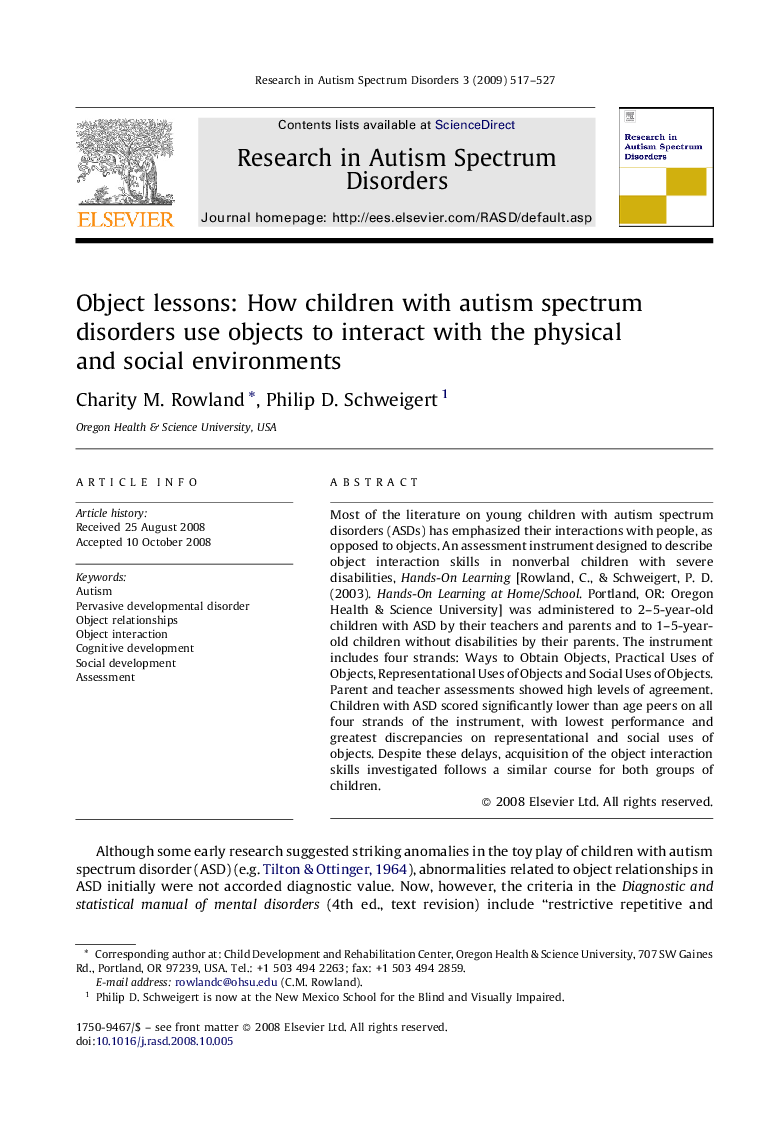| Article ID | Journal | Published Year | Pages | File Type |
|---|---|---|---|---|
| 370428 | Research in Autism Spectrum Disorders | 2009 | 11 Pages |
Most of the literature on young children with autism spectrum disorders (ASDs) has emphasized their interactions with people, as opposed to objects. An assessment instrument designed to describe object interaction skills in nonverbal children with severe disabilities, Hands-On Learning [Rowland, C., & Schweigert, P. D. (2003). Hands-On Learning at Home/School. Portland, OR: Oregon Health & Science University] was administered to 2–5-year-old children with ASD by their teachers and parents and to 1–5-year-old children without disabilities by their parents. The instrument includes four strands: Ways to Obtain Objects, Practical Uses of Objects, Representational Uses of Objects and Social Uses of Objects. Parent and teacher assessments showed high levels of agreement. Children with ASD scored significantly lower than age peers on all four strands of the instrument, with lowest performance and greatest discrepancies on representational and social uses of objects. Despite these delays, acquisition of the object interaction skills investigated follows a similar course for both groups of children.
